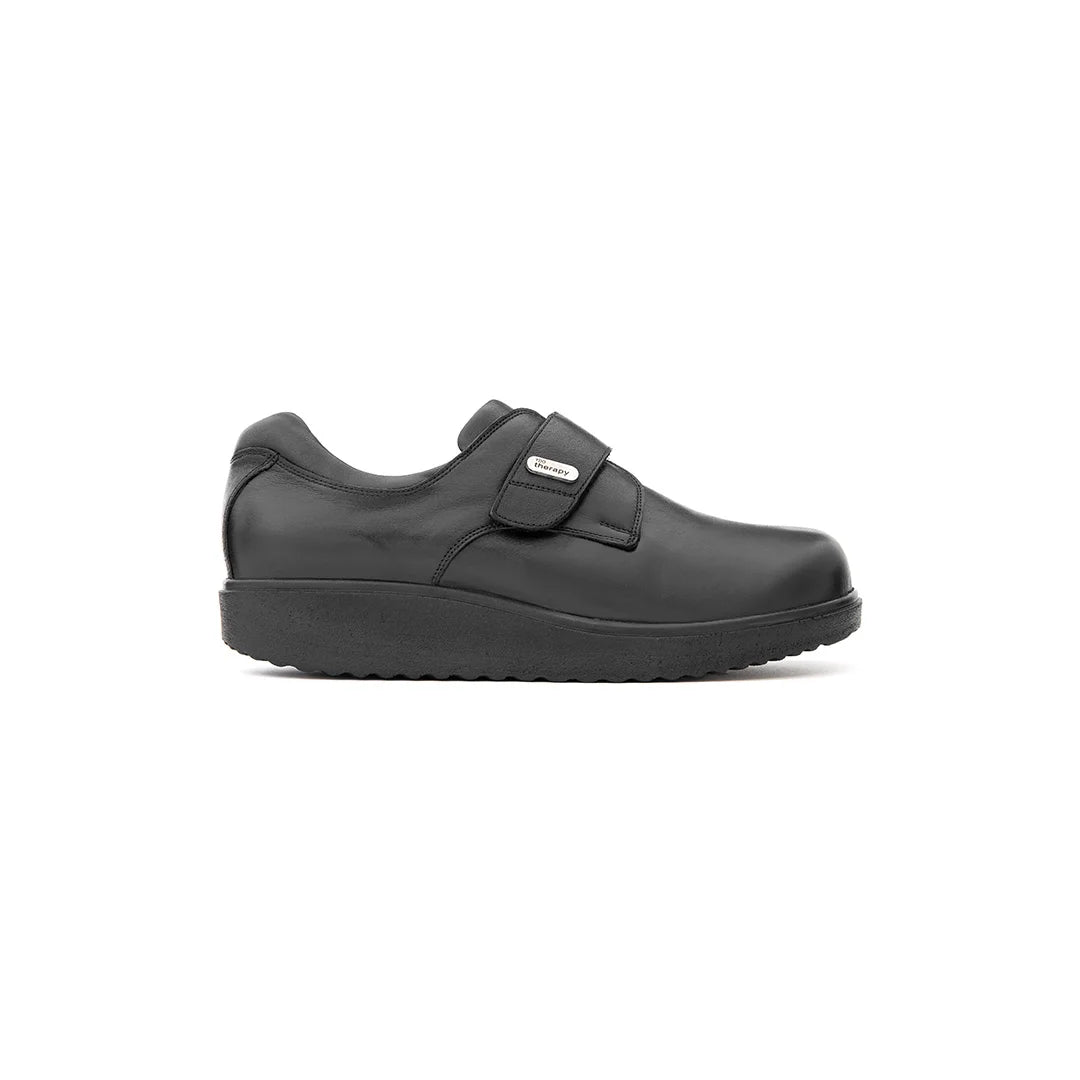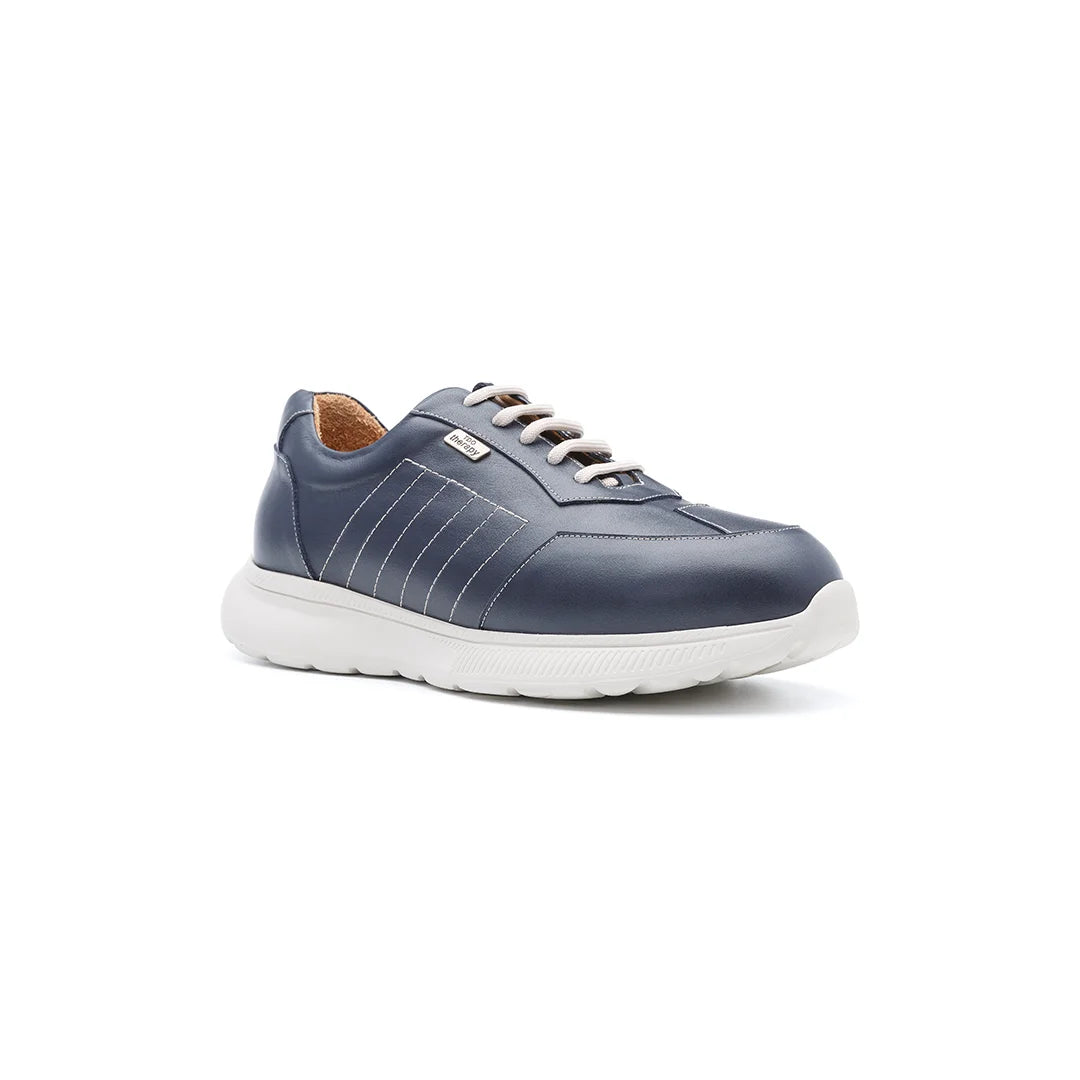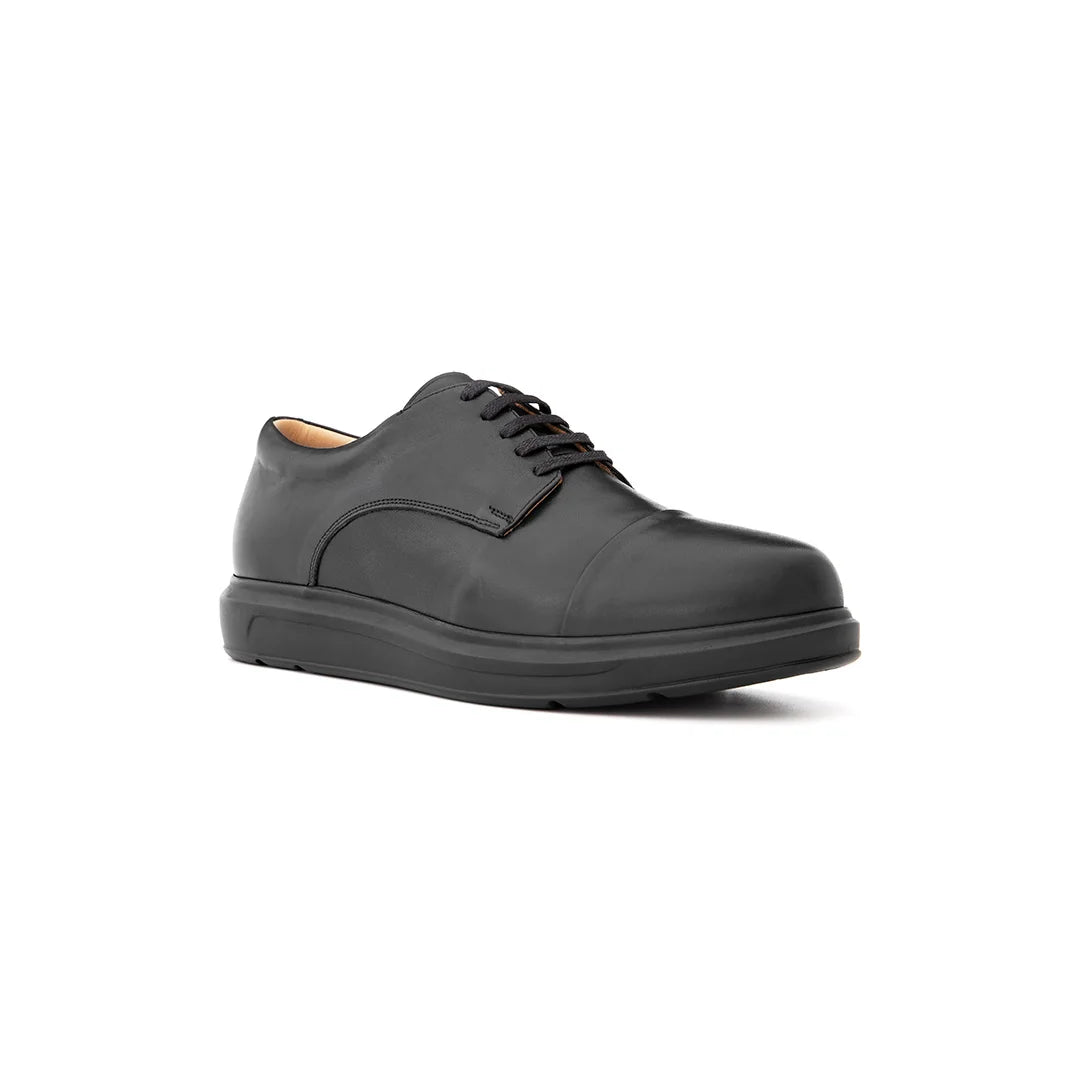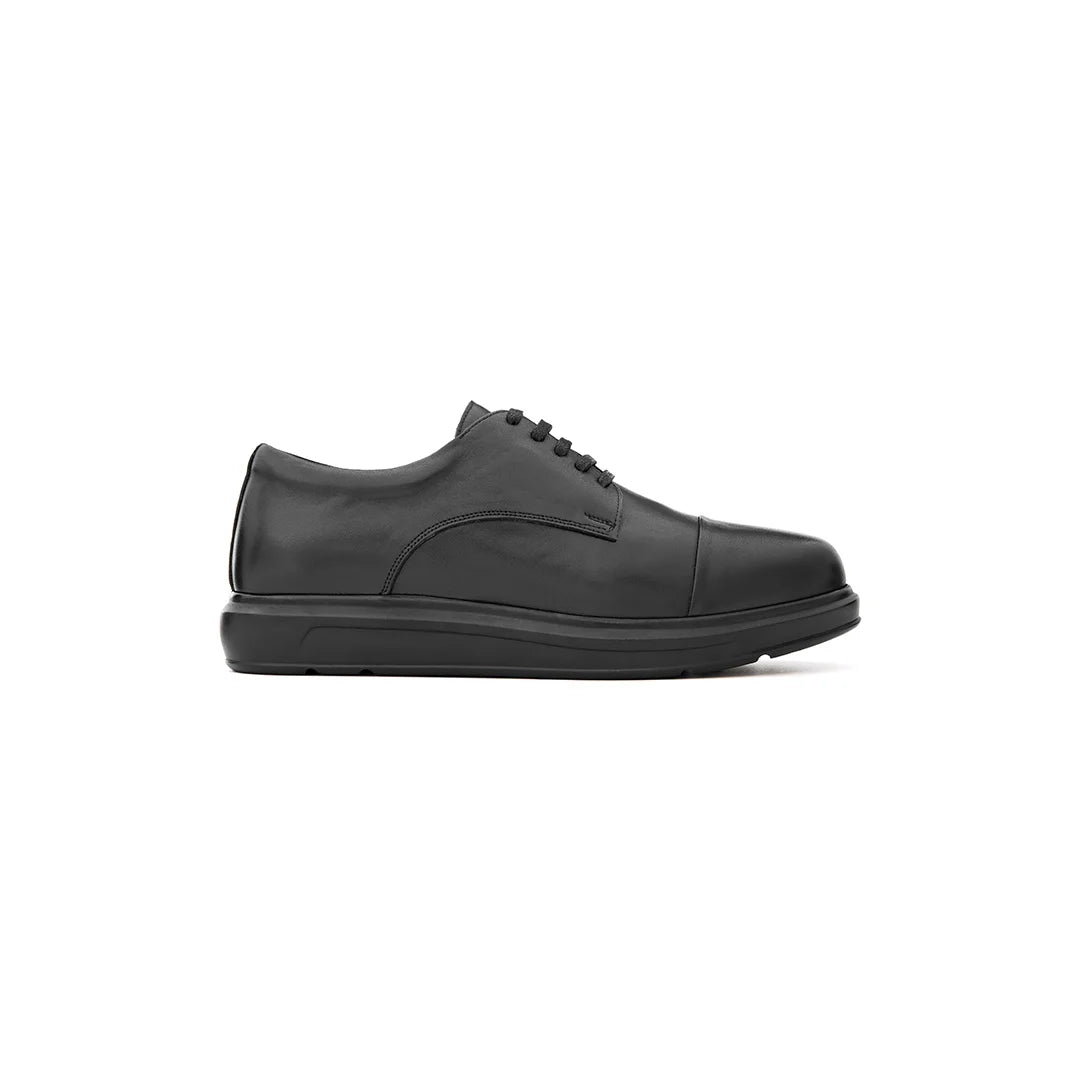Picking the right footwear for disabled adults can feel like a big job, but it's really important for staying mobile and safe. Good shoes aren't just about comfort; they can help prevent falls and keep feet healthy. This guide will walk you through everything you need to know about choosing the best footwear for disabled adults, so you can make a good choice for yourself or someone you care about.
Key Takeaways
- Good footwear helps with moving around and staying independent.
- The right shoes can stop falls and other injuries.
- Look for shoes with good support, secure fastenings, and plenty of room for toes.
- Talking to a doctor or foot expert can help you find the best fit.
- Spending a bit more on good quality shoes means they'll last longer and give better support.
Understanding the Importance of Appropriate Footwear
When it comes to footwear for disabled adults, we reckon it's more than just a fashion statement. It's about making life easier, safer, and healthier. Getting the right shoes can seriously impact someone's day-to-day life, and it's something we should all pay attention to. Let's have a look at why it matters so much.
Enhancing Mobility and Independence
Good footwear can make a massive difference in how easily someone can move around. Think about it: if your feet are comfortable and supported, you're far more likely to be active and independent. Supportive shoes can help reduce pain and fatigue, allowing people to go about their daily routines with greater ease. It's about giving people the freedom to do what they want, when they want, without being held back by their feet.
Preventing Falls and Injuries
Falls are a major concern, especially for older adults and those with disabilities. Appropriate footwear plays a key role in preventing these incidents. Shoes with good grip and stability can significantly reduce the risk of slipping or tripping. Features like non-slip soles and a secure fit are essential for maintaining balance and confidence while walking. It's a simple change that can have a huge impact on safety.
Promoting Overall Foot Health
Looking after your feet is super important, and the right footwear is a big part of that. Shoes that fit well and provide adequate support can help prevent a whole host of foot problems, from blisters and bunions to more serious conditions like plantar fasciitis. Breathable materials and proper cushioning can also keep your feet healthy and comfortable, reducing the risk of infections and skin irritation. It's all about investing in footwear that supports long-term foot health.
Choosing the right footwear is an investment in well-being. It's about enabling independence, preventing injuries, and promoting foot health. By prioritising these factors, we can help disabled adults live more active, comfortable, and fulfilling lives.
Essential Features of Footwear for Disabled Adults
When it comes to footwear for disabled adults, we're not just talking about aesthetics; we're focusing on features that genuinely make a difference in daily life. It's about finding shoes that offer support, security, and comfort, all while accommodating individual needs and challenges. Let's break down some of the most important aspects to consider.
Supportive Soles and Cushioning
The soles are the foundation of any good shoe, but especially so for those with disabilities. We need to think about both cushioning and traction. A good midsole, made from something like EVA foam, can absorb shock and reduce the impact on joints – super important if you're dealing with brittle bones or joint pain. Then there's the outsole; rubber with a decent tread pattern is ideal for grip, helping to prevent slips on wet or uneven surfaces. Avoid soft soles, as they can actually make you more wobbly.
Secure Closure Mechanisms
Keeping the foot secure inside the shoe is vital to prevent trips and falls. Laces are great for a custom fit, but they can be tricky for some people to manage. Velcro straps or buckles are often easier to use, providing a snug fit without the hassle of tying. The key is to make sure the heel doesn't slip out and the shoe stays put while walking. Shoes that are too loose? Big no-no – they increase the risk of instability.
Adequate Width and Toe Room
Toes need space! A roomy toe box is a must, allowing toes to move freely and preventing pressure on any bunions, hammertoes, or other deformities. This is especially important if you experience foot swelling. Adjustable features, like Velcro straps or laces, can also help to accommodate changes in foot size throughout the day. Breathable materials are also a plus, helping to wick away moisture and prevent skin irritation, particularly if you have diabetes or other conditions affecting foot health.
Finding the right balance of these features can really improve comfort, stability, and overall foot health. It's about choosing footwear that works with your body, not against it.
Different Types of Specialised Footwear
Okay, so let's have a chat about the different kinds of specialised footwear out there. It's not just about grabbing any old pair of shoes, especially when we're thinking about folks with disabilities. There's a whole world of options designed to make life easier and more comfortable. We'll go through some of the main types.
Orthopaedic Shoes for Support
Orthopaedic shoes are a big one. These aren't just your average comfy shoes; they're specifically designed to support the structure and mechanics of the foot, ancle, and even the leg. They can help with all sorts of problems, from flat feet to bunions. What's cool is that they often come with features like:
- Arch support: This helps distribute weight evenly and reduce strain.
- Deep heel cups: These stabilise the heel and prevent it from rolling inwards or outwards.
- Removable insoles: This means you can swap them out for custom orthotics if needed.
- Adjustable closures: Laces, Velcro straps, or buckles allow for a snug and secure fit, even if swelling is an issue.
Diabetic Footwear Considerations
Diabetic footwear is another important category. People with diabetes often have reduced sensation in their feet, which means they might not notice small cuts or blisters. These can quickly turn into serious infections. Diabetic shoes are designed to protect the feet and prevent these problems. Key features include:
- Seamless interiors: This reduces the risk of rubbing and irritation.
- Extra depth: This provides more room for toes and prevents pressure points.
- Breathable materials: This helps keep feet dry and reduces the risk of fungal infections.
- Protective soles: These offer cushioning and shock absorption to minimise impact.
It's really important for people with diabetes to get properly fitted for shoes by a podiatrist or other healthcare professional. They can assess the feet and recommend the best type of footwear.
Post-Surgical and Adaptive Options
Then there are post-surgical and adaptive shoes. After foot surgery, you might need a special shoe that protects the foot and allows it to heal properly. These shoes often have:
- Rigid soles: To limit movement and provide support.
- Adjustable closures: To accommodate swelling and bandages.
- Open designs: To allow for airflow and easy access for wound care.
Adaptive shoes are designed for people who have difficulty putting on and taking off shoes. They often feature:
- Wide openings: To make it easier to get the foot in and out.
- Velcro closures: For easy fastening and adjustment.
- Lightweight materials: To reduce strain on the feet and legs.
So, as you can see, there's a lot to think about when it comes to specialised footwear. It's all about finding the right fit and features to meet individual needs.
Finding the Perfect Fit
Finding the right footwear isn't just about size; it's about comfort, support, and how well the shoe works with your individual needs. It can feel like a bit of a treasure hunt, but trust us, the reward is well worth the effort. We're going to walk you through some key steps to make sure you end up with footwear that feels like it was made just for you.
Consulting Healthcare Professionals
Before you even think about hitting the shops, having a chat with a healthcare professional is a smart move. Podiatrists, orthotists, or even your GP can offer invaluable advice based on your specific condition and foot type. They can assess your gait, identify any potential problem areas, and recommend the types of shoes that will provide the best support and protection. Think of it as getting a personalised roadmap before starting your footwear journey. They might even be able to point you towards specific brands or features that you hadn't considered.
Understanding Your Foot Type
Knowing your foot type is like understanding your body shape when buying clothes – it makes a huge difference! Are you flat-footed, do you have high arches, or are you somewhere in between? There are simple ways to find out, like the wet foot test (wet your foot and step onto a piece of paper – the imprint will tell you a lot). Different foot types require different levels of support and cushioning, so understanding yours will help you narrow down your options. For example, someone with flat feet might need shoes with good arch support, while someone with high arches might benefit from extra cushioning.
Trying Before You Buy
This might seem obvious, but it's worth emphasising: always, always try shoes on before you buy them! And not just for a quick stroll around the shop. Wear them for a good few minutes, walk around, and even try simulating some of the movements you'd normally do in them.
Pay attention to how the shoe feels at different points of your foot. Are there any areas of pressure or rubbing? Does your heel feel secure? Are your toes able to wiggle freely? If anything feels uncomfortable in the shop, it's only going to get worse over time. And remember, feet can swell throughout the day, so it's best to try shoes on in the afternoon or evening when your feet are at their largest.
Here's a quick checklist to keep in mind when trying on shoes:
- Wear the socks you'd normally wear with the shoes.
- Walk around for several minutes to assess comfort.
- Check for any pressure points or rubbing.
- Ensure your heel feels secure and doesn't slip.
- Make sure your toes have enough room to move.
Quality and Durability Matters
When it comes to footwear, especially for those with disabilities, we reckon quality and durability are super important. It's not just about finding something that looks good; it's about investing in something that will last and provide the necessary support and protection day in, day out. Let's face it, constantly replacing shoes is a hassle, and can be expensive.
Investing in Reputable Brands
We've found that sticking with reputable brands often pays off. These brands usually have a track record of producing footwear that's not only well-designed but also built to withstand regular use. It might mean spending a bit more upfront, but in our experience, it's worth it in the long run. You're paying for better materials, construction, and often, a more thoughtful design that takes into account the specific needs of disabled adults. Plus, established brands are more likely to offer warranties or guarantees, giving you extra peace of mind.
Considering Customisation Options
Sometimes, off-the-shelf footwear just doesn't cut it. That's where customisation comes in. We've seen some amazing results with custom orthotics or modifications to existing shoes. It allows for a truly personalised fit and support system, addressing specific foot conditions or mobility challenges. It can be a game-changer for comfort and stability.
Customisation might seem like a luxury, but it can actually be a cost-effective solution if it prevents further injuries or discomfort. Think of it as an investment in your long-term well-being.
Longevity and Value for Money
Ultimately, we're all looking for value for money. And when it comes to footwear, that means finding something that will last. Durable shoes not only save you money in the long run but also reduce the environmental impact of constantly buying new ones. We always consider the materials used, the construction quality, and the potential for repairs when assessing the longevity of a shoe. A well-made pair that can withstand daily wear and tear is worth its weight in gold.
Addressing Common Misconceptions
It's easy to fall into thinking about footwear in a limited way, especially when we're talking about specialised shoes for disabled adults. Let's bust some myths!
Footwear for All Ages
It's a big mistake to think that certain types of shoes are just for older people. Foot problems can affect anyone, regardless of age. Supportive footwear isn't just for seniors; younger adults with disabilities can benefit hugely from the right kind of support and protection. It's about need, not age!
Stylish and Functional Designs
Gone are the days when supportive shoes were clunky and, well, a bit ugly. These days, there are loads of stylish options out there. You don't have to sacrifice fashion for function. Many brands now focus on creating shoes that look good and provide the support and features you need. It's all about finding the right balance.
Beyond Basic Support
It's easy to think that all supportive footwear does is provide a bit of extra cushioning. But it's so much more than that! We're talking about:
- Improved posture
- Reduced risk of falls
- Prevention of further foot problems
Investing in the right footwear is an investment in your overall well-being. It's about enabling independence, preventing injuries, and making everyday life a little bit easier.
Conclusion
So, picking the right shoes for disabled adults is a big deal for keeping them safe and independent. It's not just about looking good; it's about making sure they don't fall over and can get around easily. Things like good support, comfy soles, and a fit that isn't too tight or too loose really help. When you get these things right, it makes a huge difference to someone's day-to-day life, letting them stay active and feel good about themselves.
Frequently Asked Questions
Why is choosing the right shoes so important for disabled adults?
Finding the right footwear is super important for disabled adults because it helps them move around better, stops them from falling, and keeps their feet healthy. Good shoes give the right support and make daily tasks easier, letting people live more independently.
What key things should I look for in shoes for disabled adults?
Look for shoes with strong soles that cushion your feet well. They should have straps or laces that keep them snug, and plenty of room for your toes so they don't get squashed. These features make shoes comfy and safe.
Are there different kinds of special shoes for disabled adults?
There are many types! Orthopaedic shoes offer extra support, while diabetic footwear is designed to protect sensitive feet. You can also find special shoes for after surgery or adaptive options that are easier to put on and take off.
How can I make sure I get the perfect fit?
It's a good idea to chat with a doctor or foot expert first. They can check your feet and suggest the best shoes. Also, know your foot type – whether you have flat feet or high arches – and always try shoes on before buying them to make sure they feel right.
Does quality really matter when buying these shoes?
Yes, definitely! Investing in good quality shoes from trusted brands means they'll last longer and give better support. Sometimes, you can even get shoes made just for you, which is great for specific needs. Good shoes are worth the money in the long run.
Are special shoes only for older people, and are they always unfashionable?
Not at all! While often linked with older people, these shoes are for anyone with foot problems or mobility issues, no matter their age. And modern designs mean they can be stylish as well as helpful, offering more than just basic support.










